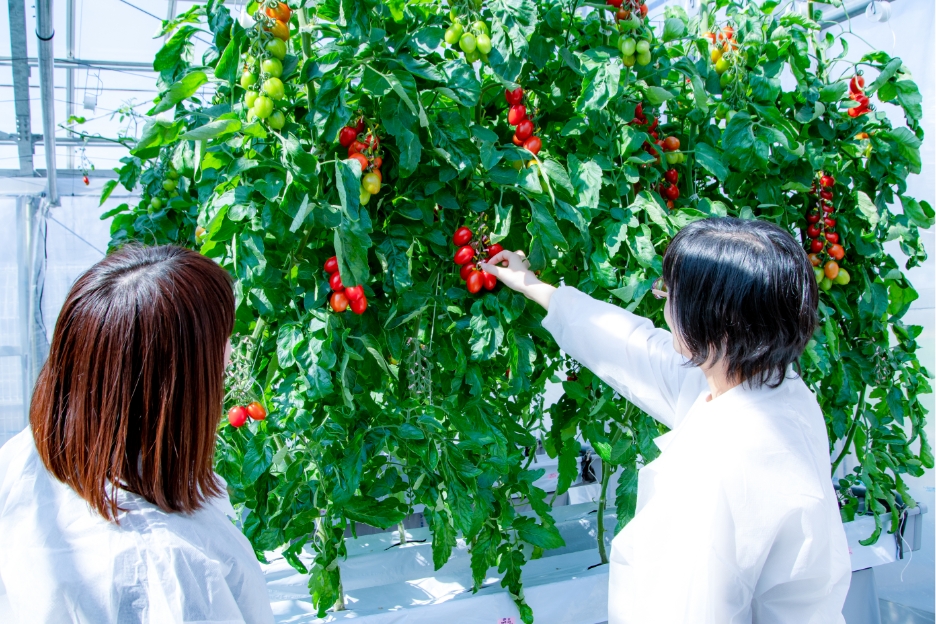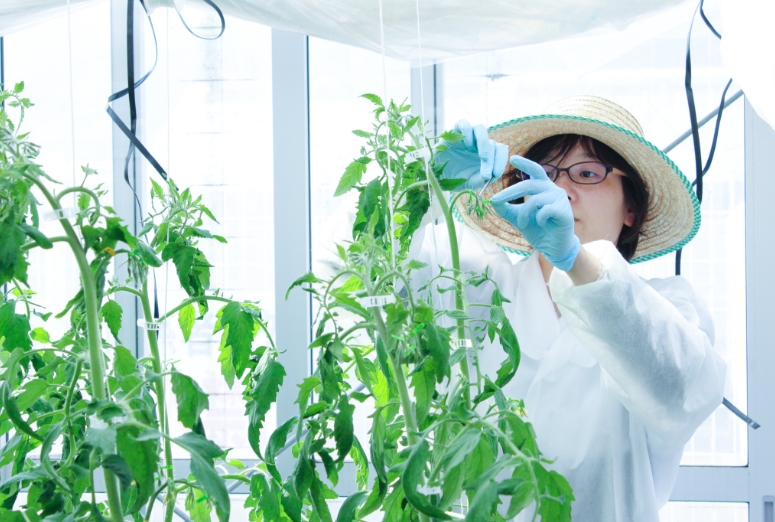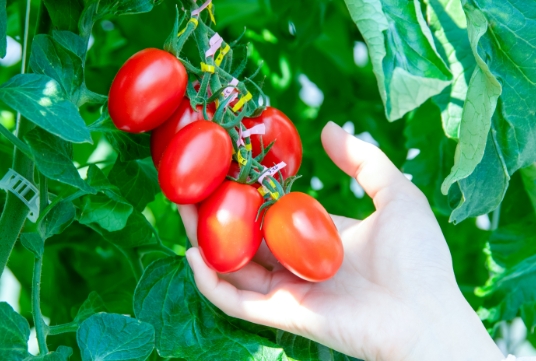
品種改良の歴史とゲノム編集の今日的意義
Plants can adapt to environmental changes through changes in their DNA sequence. Spontaneous changes can arise after random breaks in a plant’s DNA are triggered by various environmental signals, for example by solar radiation or by a plant’s own stress-induced small molecules. The subsequent DNA repair process can then cause a mutation. Spontaneous mutation is a fundamental biological process essential for the survival and evolution of plants. These spontaneous mutations are not directed to particular genes, and while most will be neutral – or not result in improvements – and some will be adverse for the plant, others will be beneficial. Researchers search for and select plants with beneficial mutations in order to make, for example, varieties retaining yield under drought conditions or with resistance to a disease or pest. This process is called plant breeding and it is a process in which breeders select random events that create beneficial mutations. The chance of finding a beneficial mutation can be increased by using genetic markers (DNA segments known to be associated with a desired characteristic) or by artificially inducing mutations through chemical agents or radiation. These traditional breeding approaches are resource-consuming and are not efficient.
Environmental conditions are ever-changing and as plants evolve, pests and diseases evolve too, producing new resilient pests that continue to plague plants. As a result, there are many diseases and pests that plants cannot be completely protected against, even with today’s breeding technologies. Drought, heat stress and soil nitrogen insufficiency are just a few examples of adverse environmental conditions that crops can be exposed to during their growing seasons. These problems are widespread in certain crops and geographies worldwide. Earth has also become increasingly urbanized, with global warming, reduced farmland availability, increased population, food crises in underdeveloped countries and consumer demands for more nutritious, high quality food. These pressures pose serious challenges that need to be addressed through improved crop breeding for future generations.


Fortunately, plant breeding has evolved due to many scientific advances. Progress has been steady and plant breeding has been one of the major contributors to addressing mankind’s food production challenges. CRISPR gene editing technology is the latest breakthrough in modern plant breeding. It is often called “accelerated plant breeding” because it allows breeders to accomplish the same improvements as through earlier breeding methods but in a much faster and resource-efficient manner.
CRISPR gene editing is a knowledge-based technology. A continuously improved knowledge of the crop’s genetic makeup and an understanding of which genes determine favorable plant characteristics now allow us to make targeted changes specifically in genes of interest to achieve favorable improvements. Such a focused effort was not possible until the development of gene editing technologies, because of the efficiency and simplicity now possible through the use of CRISPR. Using CRISPR gene editing we can make progress towards addressing the global agricultural production challenges. It is essential that food be safe and healthy for the body, and that it also be sustainable for the global environment.
CRISPR gene editing can be used in many crops and for a variety of applications, such as for increased yields under adverse environmental conditions, disease resistance, or improved nutritional quality. Experts from the private and public sectors are working on further expanding applications of CRISPR gene editing technology for improved food safety, environmental protection and other properties. Mankind’s progress has been driven by technological evolution. We strongly believe that the CRISPR gene editing technology should be used for the purpose of increasing the production of healthy and safe food for the children and Earth of tomorrow.

